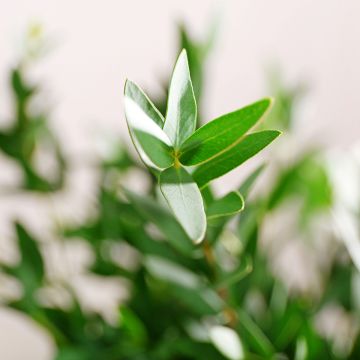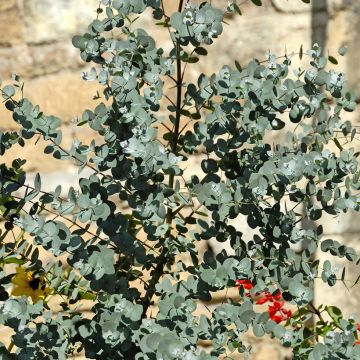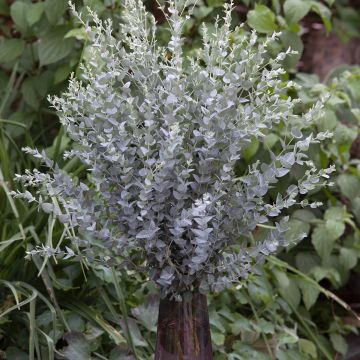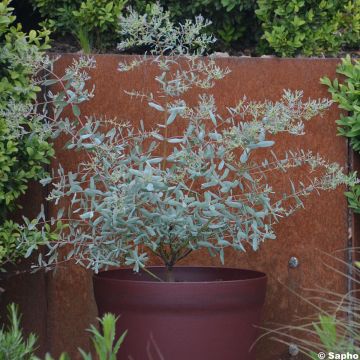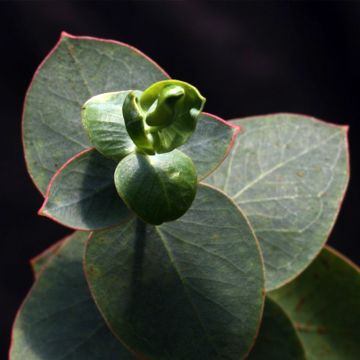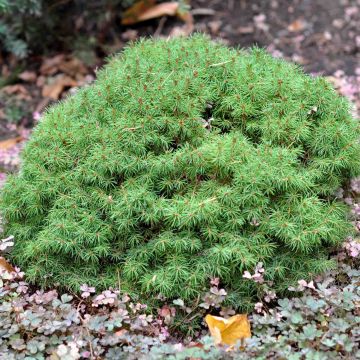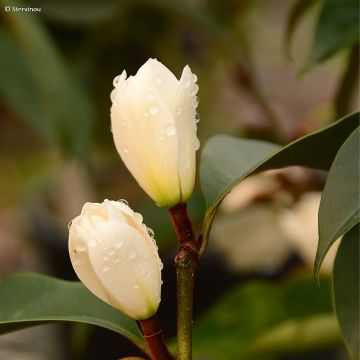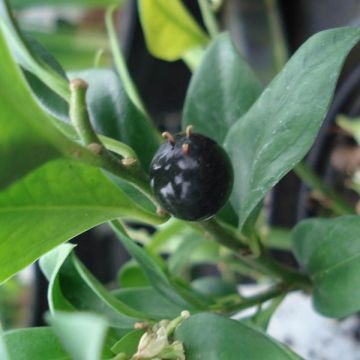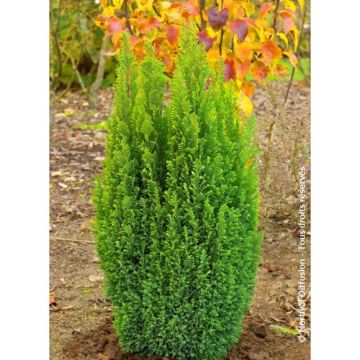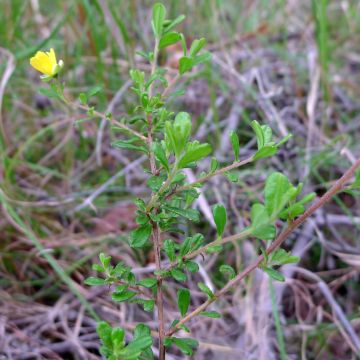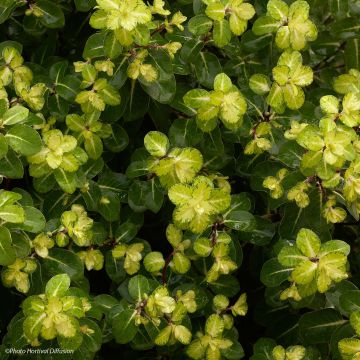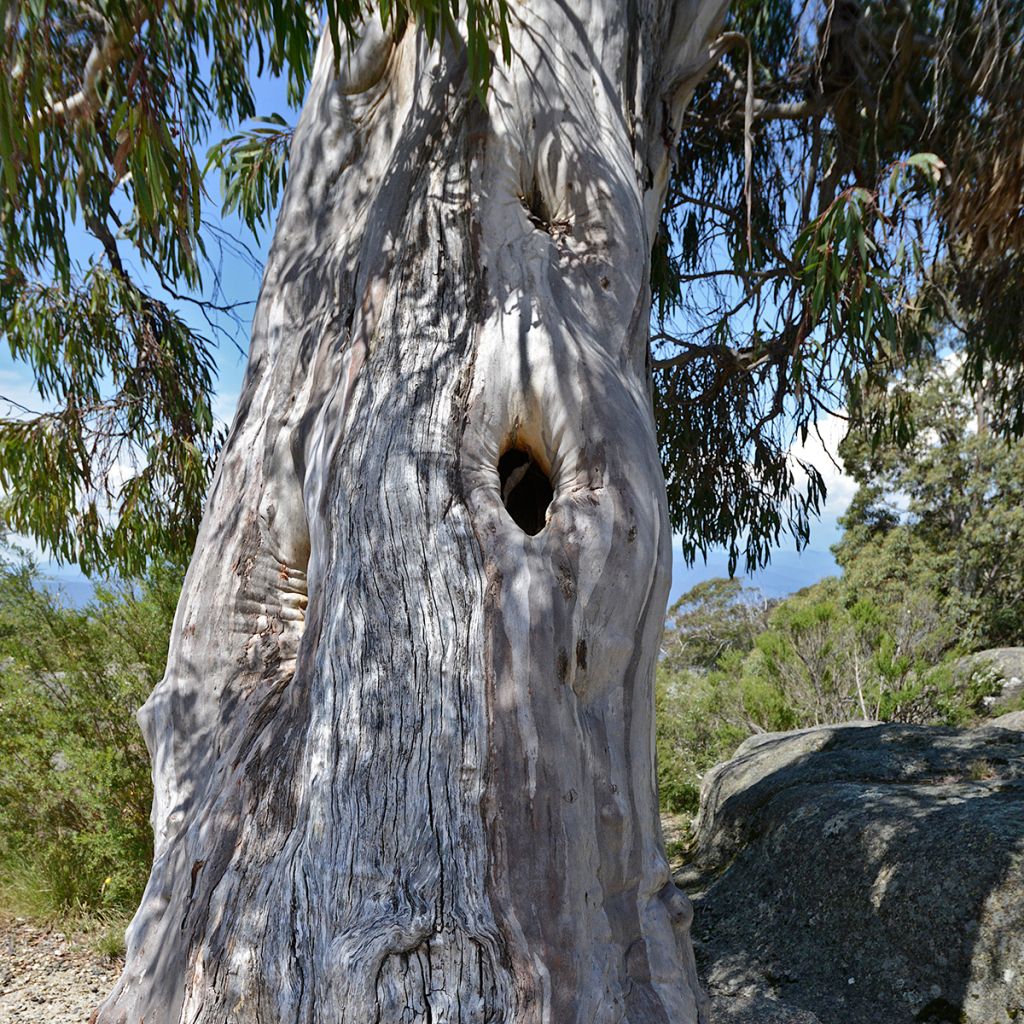

Eucalyptus pauciflora subsp. pauciflora Buffalo
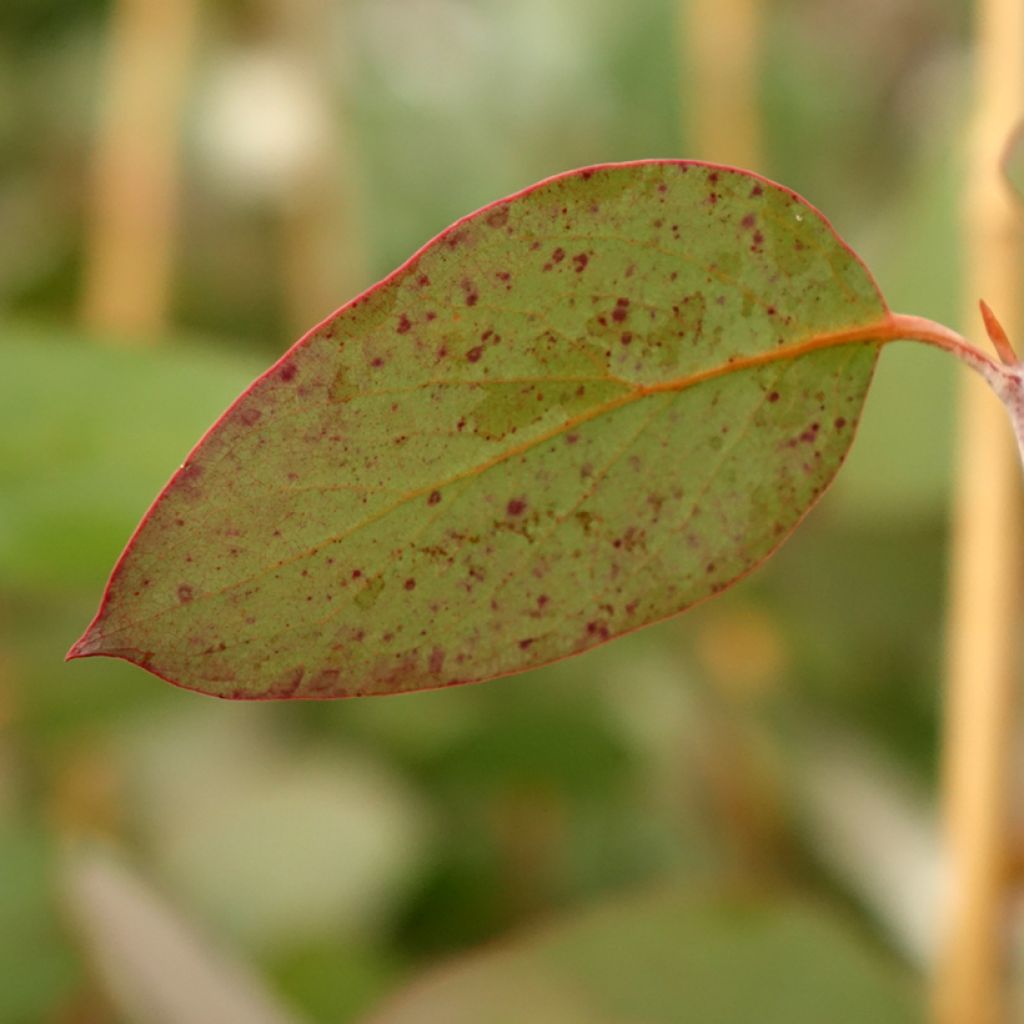

Eucalyptus pauciflora subsp. pauciflora Buffalo
Eucalyptus pauciflora subsp. pauciflora Buffalo
Eucalyptus pauciflora subsp. pauciflora Buffalo
Snow Gum
Special offer!
Receive a €20 voucher for any order over €90 (excluding delivery costs, credit notes, and plastic-free options)!
1- Add your favorite plants to your cart.
2- Once you have reached €90, confirm your order (you can even choose the delivery date!).
3- As soon as your order is shipped, you will receive an email containing your voucher code, valid for 3 months (90 days).
Your voucher is unique and can only be used once, for any order with a minimum value of €20, excluding delivery costs.
Can be combined with other current offers, non-divisible and non-refundable.
Home or relay delivery (depending on size and destination)
Schedule delivery date,
and select date in basket
This plant carries a 24 months recovery warranty
More information
We guarantee the quality of our plants for a full growing cycle, and will replace at our expense any plant that fails to recover under normal climatic and planting conditions.
Would this plant suit my garden?
Set up your Plantfit profile →
Description
Eucalyptus pauciflora subsp. pauciflora 'Buffalo' is also known as the Snow Gum of Mount Buffalo. This small tree or large evergreen shrub with multiple trunks will be appreciated for its highly ornamental bark, where shades of grey, white, and cream blend together. It has a spreading habit, forming a more or less rounded crown. Its juvenile foliage is also very attractive, with leaves of an unusual ovoid shape and a bluish-green colour. The white flowering in small pompons is an additional asset for this species, one of the most adaptable of all. Growing in acidic, neutral, or even chalky soils, it is one of the hardiest in its genus.
The Eucalyptus is a tree belonging to the Myrtaceae family, like the Feijoa, the Callistemon, or the Myrtle, with characteristic flowerings of this family. The Eucalyptus genus, native to Australia, except for a few rare species from Southeast Asia, comprises more than 800 species, among which are the tallest broadleaves in the world (E. regnans), as well as medium-sized shrubs. The Eucalyptus pauciflora subsp. pauciflora Mount Buffalo grows naturally in a very restricted geographical area, around Mount Buffalo, which peaks at an altitude of 1723 m (5652 ft 11 in), in the Australian state of Victoria. This mountain Eucalyptus is subject to a contrasting climate, with mild to hot summers and cold winters, without a distinct dry season.
This relatively slow-growing species eventually forms a small tree, or a mallee, an Aboriginal term for a bushy shrub that measures less than 10 m (32 ft 10 in). The tree form can reach up to 12 m (39 ft 5 in) in height, rarely 15 m (49 ft 2 in), while in our latitudes, it will measure between 6 and 10 m (19 ft 8 in and 32 ft 10 in), with a comparable spread. The trunk is adorned with highly ornamental smooth bark, showing a mix of grey, white, and cream tones, quite similar to that of common plane trees. This Eucalyptus has significant regenerative capacity thanks to its lignotuber. This is an underground swelling rich in starch, capable of producing numerous shoots if the aboveground part of the plant is destroyed (typically by fire). The regrowth is denser than the original plant after this coppicing. This characteristic, possessed by many Eucalyptus species, is particularly interesting from an ornamental point of view, as it allows for severe pruning, which limits the plant's development, promotes branching, and finally stimulates the formation of juvenile foliage, which in many species is more decorative than adult foliage. This is the case with Buffalo, where it takes an ovoid shape, the leave is swollen at the base tapering to a point and taking on a beautiful bluish colour. The leaves measure from 5.5 to 9 cm (2.2 to 3.5 in) long and from 3 to 5.5 cm (1.2 to 2.2 in) wide, with short petioles. The adult foliage is variable, with alternate and petiolate lanceolate leaves, either wide or narrow, or sickle-shaped. Green to bluish-green in colour, they contain essential oils that are released when crushed.
The flowering takes on the usual appearance of small white pompons, formed by umbels comprising 9 to 15 petal-less flowers, it is the stamens in clusters that are admired. The flowering takes place between October and February, and it develops into small cup-shaped or cylindrical fruits, without ornamental interest.
This species demonstrates great adaptability, both in terms of soil and climatic conditions. It grows equally well in neutral to acidic soils and also tolerates limestone. It also shows tolerance to heat and even drought, all qualities that allow it to acclimate in most regions.
Eucalyptus pauciflora subsp. pauciflora 'Buffalo' is one of the most interesting species, capable of withstanding temperatures as low as -15°C (5 °F) and beyond, provided it is planted in well-drained soil. This highly decorative large shrub or small tree will bring a touch of exoticism to gardens in cool regions. To create a delightfully exotic scene, plant Asimina triloba Allegheny alongside it, a hardy small tree that produces mango-like fruits in both shape and taste, with hints of banana flavour. Also consider Persimmon, such as the Diospyros kaki Tipo, a small tree with dark green glossy foliage evocative of distant lands, which will give you delicious orange fruits. To complete your flower bed, plant some clumps of ginger lilies at the base of your trees, such as the Hedychium coccineum Tara, with its tropical appearance, long shiny green leaves, and spikes of yellow-orange flowers.
Report an error about the product description
Eucalyptus pauciflora subsp. pauciflora Buffalo in pictures
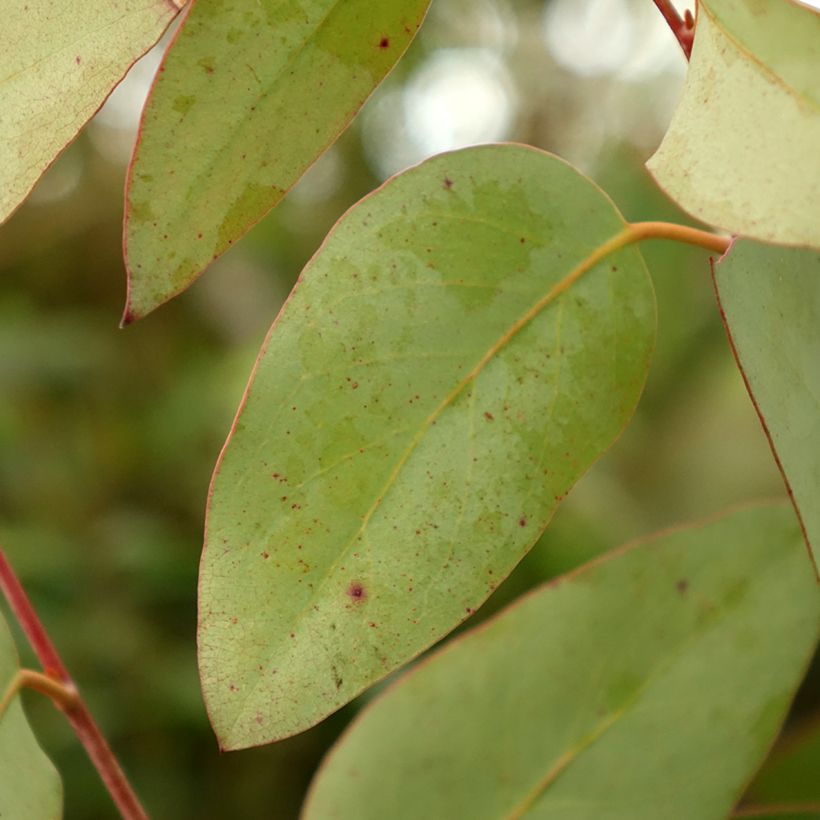

Plant habit
Flowering
Foliage
Botanical data
Eucalyptus
pauciflora subsp. pauciflora
Buffalo
Myrtaceae
Snow Gum
Australia
Other Eucalyptus
View all →Planting and care
Eucalyptus pauciflora subsp. pauciflora Buffalo should be planted in early autumn to take advantage of winter precipitation. Being quite hardy, down to -15°C (5 °F) or even lower, it only needs to be planted in early spring in truly cold regions, so that it can establish well before the following winter. Plant it in well-drained soil, moist to occasionally dry, in a sunny location. This species grows in acidic or neutral soil, and also tolerates limestone quite well.
In most regions, you can plant it directly in the ground, improving drainage with coarse sand, pumice or non-limestone gravel. Water it for the first two years to facilitate root development. Its growth is relatively slow for a Eucalyptus, so it is rarely necessary to prune it, but it tolerates it well.
Planting period
Intended location
Care
This item has not been reviewed yet - be the first to leave a review about it.
Similar products
Haven't found what you were looking for?
Hardiness is the lowest winter temperature a plant can endure without suffering serious damage or even dying. However, hardiness is affected by location (a sheltered area, such as a patio), protection (winter cover) and soil type (hardiness is improved by well-drained soil).

Photo Sharing Terms & Conditions
In order to encourage gardeners to interact and share their experiences, Promesse de fleurs offers various media enabling content to be uploaded onto its Site - in particular via the ‘Photo sharing’ module.
The User agrees to refrain from:
- Posting any content that is illegal, prejudicial, insulting, racist, inciteful to hatred, revisionist, contrary to public decency, that infringes on privacy or on the privacy rights of third parties, in particular the publicity rights of persons and goods, intellectual property rights, or the right to privacy.
- Submitting content on behalf of a third party;
- Impersonate the identity of a third party and/or publish any personal information about a third party;
In general, the User undertakes to refrain from any unethical behaviour.
All Content (in particular text, comments, files, images, photos, videos, creative works, etc.), which may be subject to property or intellectual property rights, image or other private rights, shall remain the property of the User, subject to the limited rights granted by the terms of the licence granted by Promesse de fleurs as stated below. Users are at liberty to publish or not to publish such Content on the Site, notably via the ‘Photo Sharing’ facility, and accept that this Content shall be made public and freely accessible, notably on the Internet.
Users further acknowledge, undertake to have ,and guarantee that they hold all necessary rights and permissions to publish such material on the Site, in particular with regard to the legislation in force pertaining to any privacy, property, intellectual property, image, or contractual rights, or rights of any other nature. By publishing such Content on the Site, Users acknowledge accepting full liability as publishers of the Content within the meaning of the law, and grant Promesse de fleurs, free of charge, an inclusive, worldwide licence for the said Content for the entire duration of its publication, including all reproduction, representation, up/downloading, displaying, performing, transmission, and storage rights.
Users also grant permission for their name to be linked to the Content and accept that this link may not always be made available.
By engaging in posting material, Users consent to their Content becoming automatically accessible on the Internet, in particular on other sites and/or blogs and/or web pages of the Promesse de fleurs site, including in particular social pages and the Promesse de fleurs catalogue.
Users may secure the removal of entrusted content free of charge by issuing a simple request via our contact form.
The flowering period indicated on our website applies to countries and regions located in USDA zone 8 (France, the United Kingdom, Ireland, the Netherlands, etc.)
It will vary according to where you live:
- In zones 9 to 10 (Italy, Spain, Greece, etc.), flowering will occur about 2 to 4 weeks earlier.
- In zones 6 to 7 (Germany, Poland, Slovenia, and lower mountainous regions), flowering will be delayed by 2 to 3 weeks.
- In zone 5 (Central Europe, Scandinavia), blooming will be delayed by 3 to 5 weeks.
In temperate climates, pruning of spring-flowering shrubs (forsythia, spireas, etc.) should be done just after flowering.
Pruning of summer-flowering shrubs (Indian Lilac, Perovskia, etc.) can be done in winter or spring.
In cold regions as well as with frost-sensitive plants, avoid pruning too early when severe frosts may still occur.
The planting period indicated on our website applies to countries and regions located in USDA zone 8 (France, United Kingdom, Ireland, Netherlands).
It will vary according to where you live:
- In Mediterranean zones (Marseille, Madrid, Milan, etc.), autumn and winter are the best planting periods.
- In continental zones (Strasbourg, Munich, Vienna, etc.), delay planting by 2 to 3 weeks in spring and bring it forward by 2 to 4 weeks in autumn.
- In mountainous regions (the Alps, Pyrenees, Carpathians, etc.), it is best to plant in late spring (May-June) or late summer (August-September).
The harvesting period indicated on our website applies to countries and regions in USDA zone 8 (France, England, Ireland, the Netherlands).
In colder areas (Scandinavia, Poland, Austria...) fruit and vegetable harvests are likely to be delayed by 3-4 weeks.
In warmer areas (Italy, Spain, Greece, etc.), harvesting will probably take place earlier, depending on weather conditions.
The sowing periods indicated on our website apply to countries and regions within USDA Zone 8 (France, UK, Ireland, Netherlands).
In colder areas (Scandinavia, Poland, Austria...), delay any outdoor sowing by 3-4 weeks, or sow under glass.
In warmer climes (Italy, Spain, Greece, etc.), bring outdoor sowing forward by a few weeks.
































